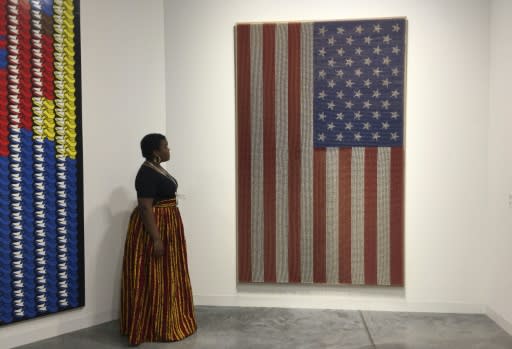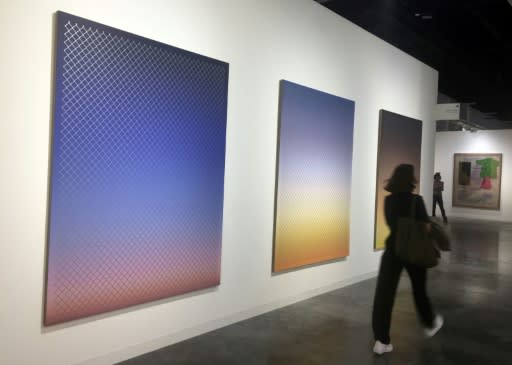Edgy US political climate reflected at Art Basel in Miami Beach
The volatile political climate in the United States reverberates at Art Basel, the international art fair held in December in Miami Beach, with some artists portraying a country on the "verge of chaos," populated by "phantasmagoric" minorities. Miami Beach, a barrier island facing Miami, is celebrated for its beaches and its unbridled party atmosphere. Young tourists can be seen "twerking" on the roofs of their rented cars, and on long weekends a drunken mass of humanity often spills into the streets, in unruly scenes punctuated by gunfire and police checks. But during "art week," which is held every year during the first week of December, flip-flops are replaced with designer clothes, beer with champagne, and suddenly the slender island is populated by a horde of trend-setting art lovers and dealers from around the world. In this dressed-up version of Miami Beach, 268 galleries from some 35 countries will put works on display from Thursday through Sunday -- from the abstract or conceptual to the frivolous. Social commentary on the world of politics -- and particularly US politics -- abound. "Expect to see many political positions in galleries from all over the world," said Marc Spiegler, global director of Art Basel, at a news conference on Wednesday. "Many of those galleries will exhibit new work which is directly tied, directly made in response to the current context." An example is the latest series "American Quilts 2018" by American artist Rob Pruitt, which Kyla McMillan, of the Gavin Brown gallery, describes as "a commentary on the current political status of the US." One of his pieces is a 8 by 5 feet (2.5 by 1.5 meter) US flag composed of hundreds of hand-painted match sticks whose red, white and blue heads give the image its color. It is called "Pledge Allegiance (Flammable)." "It's really commenting on the state of the American political climate on the verge of chaos," McMillan told AFP. From the same artist is "wall ($)," a piece made with US bills and coins to represent the impenetrability of the world of the one percent. Three other works symbolize the US border with Mexico, behind bars, at different times of day. - Silenced minorities - In the same vein, US artist Teresita Fernandez, whose parents are Cuban, exhibits a map of the United States whose borders are delineated with pieces of coal that leave "phantasmagoric" traces on a white background. It is called "Untitled (Specter)." "It's representing ghosts in the sense of those individuals and minorities that are not being heard, that are metaphorically being silenced," said Sarah Levine, of the Lehmann Maupin gallery. The work is the product of "the politically charged moment in this country," she said. Abraham Cruzvillegas of Mexico also is using the art fair to protest, in his case, the drying up of his country's lakes -- which he attributes to climate change. He represents the situation with a fishing net raised over a piece of smoked cheese. Social themes like the migration crisis are taken up by artists like Robert Longo, an American, and Silvina der Meguerditchian of Argentina. Longo is exhibiting a dramatic work in ink and charcoal which, with photographic realism, depicts a group of sub-Saharan refugees sinking in the Mediterranean, while Der Meguerditchian weaves a wool quilt with pictures and documents of old immigrants. The annual fair, which also is held in Switzerland and Hong Kong, has become the principal forum for showing art in the Americas since it was extended to Miami in 2002. Last year's fair drew 82,000 visitors to Miami Beach, according to the organizers. A woman stands next to a piece by Teresita Fernandez, "Untitled (Specter)," representing a US map made of charcoal pins as a metaphor of the trace left by minorities An exhibitor stands next to a piece by Rob Pruitt titled "Pledge Allegiance (Flammable)," which is made of sticks hand-painted to look like matches Detail of a piece by Rob Pruitt titled "Pledge Allegiance (Flammable)" which is made of sticks hand-painted to look like matches A visitor walks by three pieces by Rob Pruitt that depict a fenced US-Mexico border at different times of day





